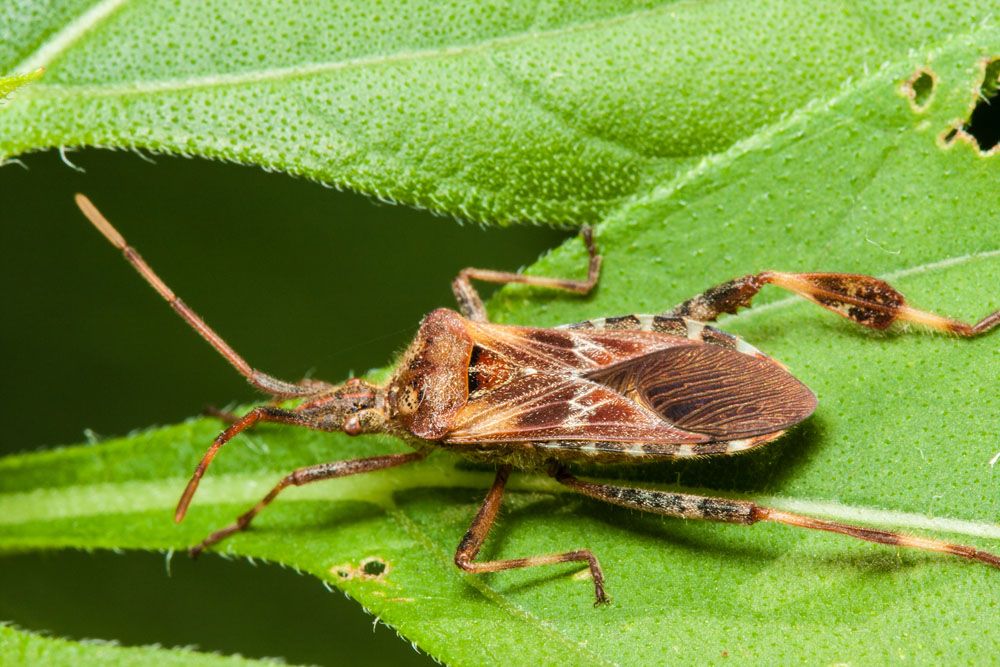
Western Conifer Seed Bug – Leptoglossus occidentalis
Western Conifer Seed Bug: Appearance, Territory, Damage and Life Cycle
Latin Name: Leptoglossus Occidentalis
Appearance: The leaf-footed insect family Coreiidae includes Western conifer seed bugs. Adults are 34 of an inch-long, elongate, reddish to dull brown in color, and have a thin, white zigzag straight line across the center of the wings. They have long, slender antennae and flattened hind legs (leaf-like).
Hosts Plants: White pine, red pine, Scotch pine, Austrian pine, mugo pine, white spruce, Douglas fir, and hemlock are among the host plants. These trees are frequently planted or growing near dwellings, and if this is the case, the bugs may seek out surrounding structures as an overwintering habitat.
Territory: This true bug of the Coreidae family feeds mostly on the seeds and growing cones of various conifer species and hybrids. This insect has been spreading eastward since it was discovered in Michigan in the fall of 1987. Its range now stretches across the northern United States and into Canada.
Damage Insect Cause: These pests do not cause structural harm to homes; they are primarily regarded a nuisance. The bad news is that these pests may infest homes in vast numbers, and once inside, they can be difficult to eradicate. They climb into wall voids and attics after dark, through cracks and holes in the siding, foundation, and eaves, or around windows. They, like other intruders, do not bite, sting, feed, spread illnesses, or otherwise damage humans, pets, the house, or its contents.
Life History and Habits: The western conifer seed bug lays two-millimeter-long brown eggs in linear clusters on the needles of a suitable conifer host plant in late spring and hatches ten days later. Nymphs begin eating as soon as they hatch, develop through five instars, and reach maturity by mid-August.
